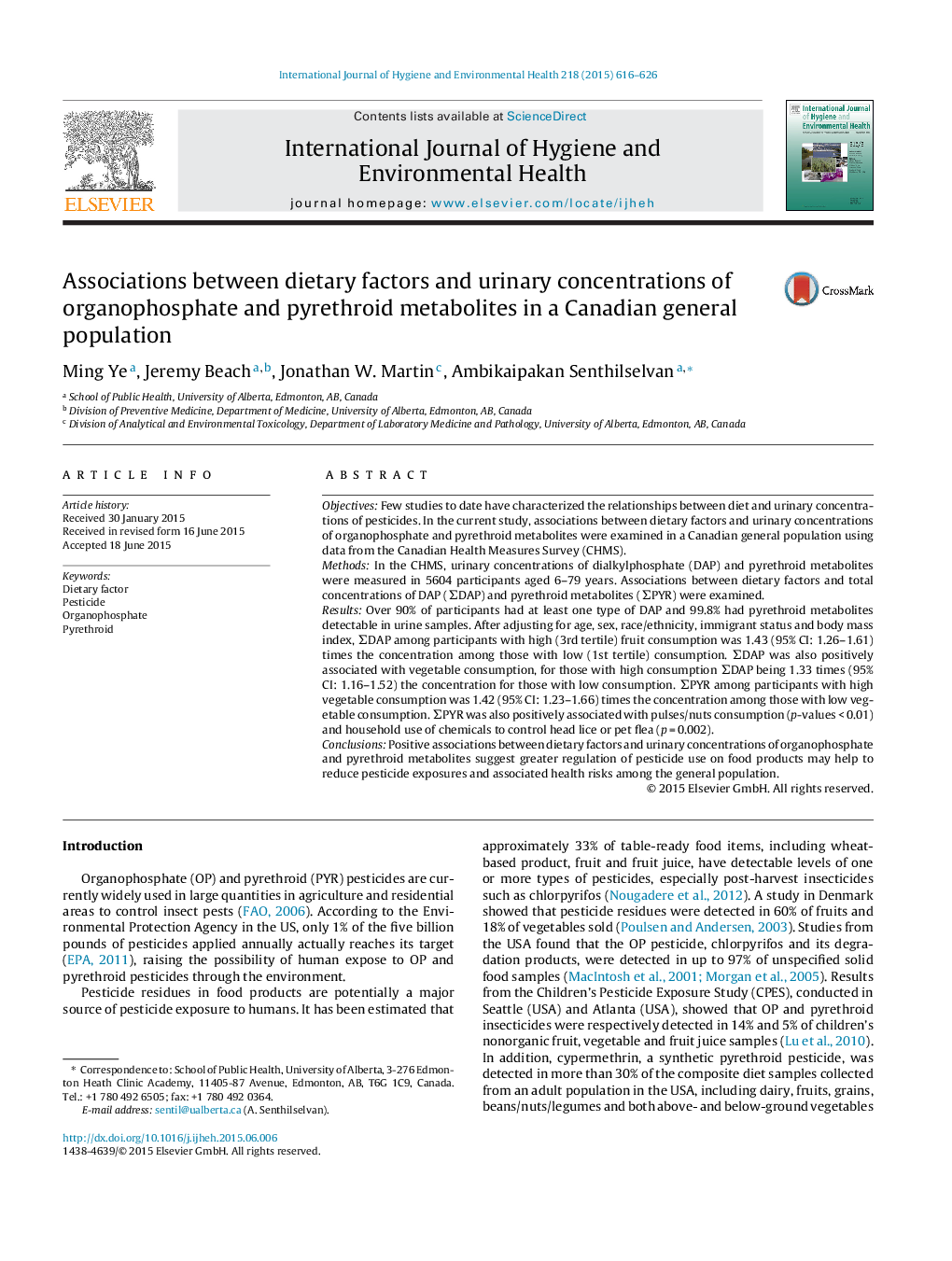| Article ID | Journal | Published Year | Pages | File Type |
|---|---|---|---|---|
| 2588425 | International Journal of Hygiene and Environmental Health | 2015 | 11 Pages |
•Over 90% of the participants had dialkyl phosphates (DAP) detectable in urine.•99.8% of the participants had pyrthroid (PYR) metabolites detectable in urine.•Fruit and vegetable consumptions were positively associated with DAP levels.•Pulses/nuts and vegetable consumptions were positively associated with PYR levels.
ObjectivesFew studies to date have characterized the relationships between diet and urinary concentrations of pesticides. In the current study, associations between dietary factors and urinary concentrations of organophosphate and pyrethroid metabolites were examined in a Canadian general population using data from the Canadian Health Measures Survey (CHMS).MethodsIn the CHMS, urinary concentrations of dialkylphosphate (DAP) and pyrethroid metabolites were measured in 5604 participants aged 6–79 years. Associations between dietary factors and total concentrations of DAP (ΣDAP) and pyrethroid metabolites (ΣPYR) were examined.ResultsOver 90% of participants had at least one type of DAP and 99.8% had pyrethroid metabolites detectable in urine samples. After adjusting for age, sex, race/ethnicity, immigrant status and body mass index, ΣDAP among participants with high (3rd tertile) fruit consumption was 1.43 (95% CI: 1.26–1.61) times the concentration among those with low (1st tertile) consumption. ΣDAP was also positively associated with vegetable consumption, for those with high consumption ΣDAP being 1.33 times (95% CI: 1.16–1.52) the concentration for those with low consumption. ΣPYR among participants with high vegetable consumption was 1.42 (95% CI: 1.23–1.66) times the concentration among those with low vegetable consumption. ΣPYR was also positively associated with pulses/nuts consumption (p-values < 0.01) and household use of chemicals to control head lice or pet flea (p = 0.002).ConclusionsPositive associations between dietary factors and urinary concentrations of organophosphate and pyrethroid metabolites suggest greater regulation of pesticide use on food products may help to reduce pesticide exposures and associated health risks among the general population.
